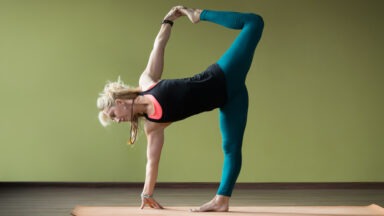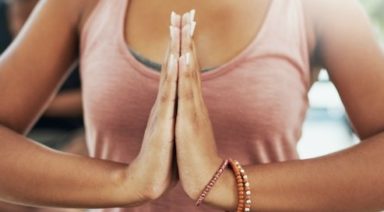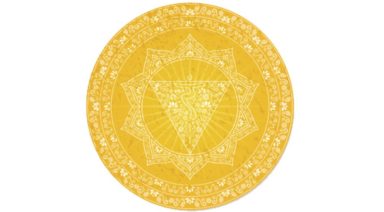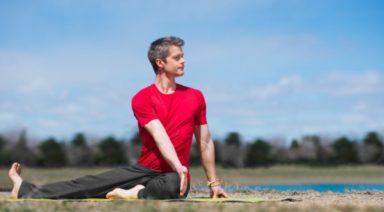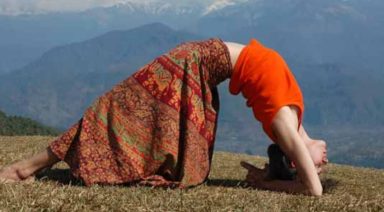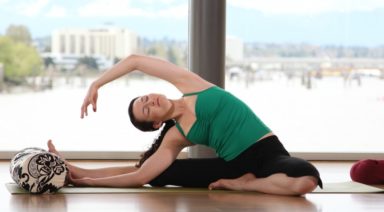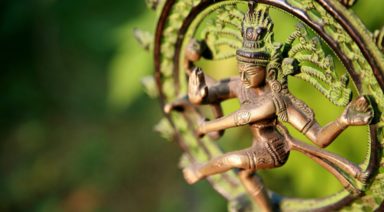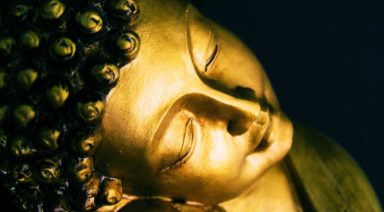How to Live with Purpose: The Eight Paths of Yoga

The word yoga is translated literally as union but there are so many different forms, types and practices in yoga that it can often seem confusing. Although the eight limbs of yoga and the eight paths of yoga sound similar, it’s important to differentiate them.
The eight limbs of yoga is explained in Patanjali’s Yoga Sutras as an eightfold path called ashtanga, which means eight limbs (ashta= eight, anga= limb). These limbs are suggestions for living a life full of purpose and meaning. They act as a compass for self-discipline, integrity, and connecting to the divine within ourselves as well as the world around us. They are: yamas, niyamas, asana, pranayama, pratyahara, dharana, dhyana and Samadhi.
The eight paths or forms of yoga are Hatha, Bhakti, Jnana, Karma, Tantra, Raja, Kriya, and Kundalini.
The eight paths or forms of yoga each incorporate at least one or more of the eight limbs of yoga. All forms are practices to accelerate the process of yoga, or what the Bhagavad Gita refers to as, “the science of creating union between the Individual Consciousness with the Ultimate Consciousness.”
Each yogic path essentially is a set of practices designed for a certain type of practitioner. While Karma yoga uses action and service, Bhakti yoga focuses on love and devotion as means of attaining union. Raja yoga is known as the yoga of concentration and Jnana yoga is the yoga of knowledge.
Different from the branches of yoga, explained in Ashtanga, the eight paths each have a unique history and origination. As a yoga practitioner, you might want to review the origin and meaning of each, try the exercises below and journal or meditate on the answers to determine which form you will choose to explore next. Remember, you can only master so many forms in a lifetime.
THE EIGHT PATHS OF YOGA
HATHA
The practice of asana, yoga postures, is commonly referred to as Hatha yoga. In Hatha yoga, the root, ha refers to the life, or pranic force, which governs the physical body. The ha root is also the audible sound of our last breath. The syllable tha denotes the mind, or citta force. With practice, Hatha yoga awakens the physical and mental forces that regulate our lives. In addition, the body systems are balanced and purified and the mind is prepared for the focus necessary to clear blockages in our energy centers, or chakras, and the practice of accessing the kundalini energy within us.
Higher states of awareness and meditation become available through the subtleties of refining one’s personality through asana, breathing, energy locks, mudras, and physical/mental detox techniques.
EXERCISE
Hatha yoga is the root of the physical practice; using a journal, describe five points or postures in which you feel most grounded, or rooted.
BHAKTI
Bhakti is a yogic practice of love and devotion/complete faith. Faith is in the recognition that there is divinity or supreme consciousness in any form: Lord Rama, Krishna, Christ, Mohammed, Buddha, a Guru for his disciples, etc.
Followers of the Bhakti practice experience an emotional connection with the form of faith recognized.
Through the free flow of energy, chants/songs or sound currents, Bhakti yoga releases mental and physical disorders often caused by people’s tendency to suppress emotions.
EXERCISE
As a practice of love and heart centeredness; using a journal, describe that to which you are devoted. If you’re unsure, look at what prioritizes your time. In addition, search for a song or chant that aligns with your devotion.
JNANA
This is the yoga of knowledge becoming wisdom. This type of yoga calls to mind the inscription on the temple of Apollo at Delphi, that says “Know thyself”.
Some components of Jnana yoga include: moving beyond the notion of belief into what’s referred to as ‘realization’; introspection as a practice of self-awareness and self-analysis; the experience of knowledge; intuitive wisdom and inner unity. When we know and understand our own personal patterns through self-analysis, we’re able to recognize them in others. This leads to unity through the bridge of compassion.
Jnana yoga provides the practice to transform intellectual knowledge into wisdom.
It’s a pathway by which one recognizes the personal as an integral element of the universal: one discovers how their life purpose, or dharma, relates to the universe.
JNANA EXERCISE
Write five responses to the question, “Who am I?” Further the writing by identifying these elements in others and the world.
KARMA
This is the yoga of action and service, a path of devotion to the work. The goal is to transcend one’s identity through the efforts of selfless work. There’s an emphasis on non-attachment with the work and becoming an instrument of the divine, or a ‘clear channel’.
The essence of Karma yoga as extracted from the Bhagvad Gita says: “The world confined in its own activity except when actions are performed as worship of God. Therefore one must perform every action sacramentally and be free of your attachments to the results.”
KARMA EXERCISE
Write five ways in which you can be of service, followed by five action steps (adding a time frame or date by which to complete is useful).
TANTRA
The word tantra means to weave or expand. The purpose of Tantra yoga, is a deeper connection with others and the universe through the process of merging spiritual styles, teachings, and various yoga practices. The Sanskrit word tantracomes from the words tattva, the science of cosmic principles, and mantra, the science of sound vibrations.
TANTRA EXERCISE
Weave the elements of a tantric home practice by blending your favorite mantra or chant with movements and postures. Allow yourself the freedom to explore and create.
RAJA
Raja is the yoga of concentration, a system of yoga based on eight stages described in Patanjali’s yoga Sutras. The practice of Raja yoga embodies the yamas (restraint) and niyamas (disciplines) to purify practitioners; the asanas (postures) and pranayamas (breathing techniques) to uplift vitality and health; pratyahara (sensory withdrawal) and dharana (concentration) to create balance of mind and emotions; dhyana (meditation) and samadhi (absorption in the universal identity) to develop consciousness. The root raj means king.
Practicing Raja yoga enables the practitioner to reign over the kingdom of their mental, emotional, physical and spiritual existence and find balance in the whole of existence.
RAJA EXERCISE
Using a journal, elaborate on what it might look like for you to sustain a state of balance both in your individual state and as that relates to the world around you. Might you behave differently at work or at home? Or towards others in traffic?
KRIYA
The word kriya means action or movement and refers to both physical activity as well as movement of energy and awareness. Kriya also refers to the result of the practice: total union that occurs from the purposeful actions and awakening in consciousness. The harmony of mental, physical and energetic faculties promotes a state of evolution into one’s highest potential. Only 20 or so of the over 70 kriyas in the full form of Kriya yoga are commonly known. These practices are written in Sanskrit, inscribed in numerous tantric texts. Only a few of these have been translated into other languages.
KRIYA EXERCISE
What do the phrases, “purposeful actions” and “awakening consciousness” mean to you? How might you gain a greater understanding and embodiment of these?
KUNDALINI
This system of yoga is concerned with awakening of the energy centers or chakras, which exist in every individual. Asanas, pranayama, mudra and bandha (conscious engagement and release of energy locks) and other forms of yoga such as Mantra yoga are used to stimulate the awakening. The availability of Kundalini yoga in the West is attributed to Yogi Bhajan, who courageously introduced the practice to the United States and Canada in the 1960’s.
Kundalini practices and kriyas aid in releasing kundalini energy that rests at the base of the spine and distributes throughout the body by way of the chakras. Glandular systems and neurological functions are enhanced with the practice. All elements, including the specific angles at which the body is positioned in various kriyas are all intentional in furthering the overall health and well being of the practitioner.
KUNDALINI EXERCISE
Kundalini yoga is becoming increasingly available. Seek out a yoga studio that offers Kundalini yoga as taught by Yogi Bhajan or practice alongside videos available online.
Regardless of which type of yoga you currently practice, stay curious and keep exploring other forms.
How to Use the Yoga Sutras to Tame Your Anxiety
The Yoga Sutras Were Perfected, Passed Down, and Finally Written
The Yoga Sutras is the first official yoga textbook that offers the complete sequential system of yoga (also known as Samkhya) as prescribed by the Sage Patanjali himself more than 2,000 years ago. To understand the lineage, keep in mind that this system had been passed down orally from student to teacher for 3,000 years prior to the penning down of The Yoga Sutras. By the time yoga reached the Sage Patanjali, generations of devout practitioners dedicated their lives to the study of yoga, which would later be enumerated in the yoga sutras. Why were they so committed to this practice?
Back in the Day, There Was No “Medicine”
Yoga was first created and propagated at a time when psychotherapy and Western medicine did not exist. Yet anxiety and suffering did. Humans have always been anxious because that is how our brains developed evolutionarily in response to predation and threat. That is why humans have a negativity bias. We remember all that went wrong and focus on all that can go wrong in order to survive. But we are no longer just surviving.
Anxiety is a crucial component to our ability to remain alive in order to be able to procreate, protect and raise young, and ultimately keep offspring alive until their sexual maturity. Imagine what the outcome would have been if people just relaxed in the face of danger? That response would have opened people up to predation and death. Without anxiety, the nervous system would fail to become aroused. In turn, stress hormones such as cortisol and adrenaline would not be released and humans would not have been able to run and escape danger. They would have been hunted to extinction.










